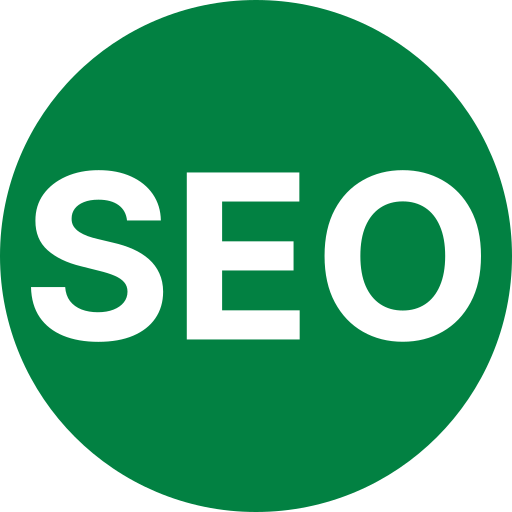The Complete Guide to Mastering SEO for Powerful Traffic
25 min read

Executive Summary – The Paradox of “Brief and Lengthy” SEO
Search Engine Optimization, or SEO, is often perceived as a complex and intimidating field, but at its core, it is a strategic discipline focused on building a sustainable online presence. This report is designed to address a common paradox: the need for a guide that is simultaneously “brief and lengthy.” It is structured to be “brief” by organizing complex concepts into self-contained, scannable modules with clear headings and tables. Conversely, it is “lengthy” in its depth, as each section provides a comprehensive explanation of its topic, backed by detailed analysis and practical recommendations.
The report provides a foundational understanding of what SEO is and why it is critical for any online venture, highlighting its role as a stable marketing channel that delivers lasting results. It systematically deconstructs the three core pillars of SEO: On-Page, Technical, and Off-Page, explaining their inter dependencies and crucial role in a holistic strategy. Furthermore, the guide integrates contemporary topics, such as the strategic importance of Core Web Vitals, the “Experience, Expertise, Authoritativeness, and Trustworthiness” (E-E-A-T) framework, and the evolving role of AI in content creation. It concludes by outlining a practical, step-by-step workflow and identifying common pitfalls to help beginners avoid costly mistakes. This guide serves as a foundational masterclass, enabling the reader to navigate the world of SEO with a clear, logical, and actionable roadmap.
SEO 101 – A Foundational Understanding
What is SEO? An Analogy-Driven Definition
Search Engine Optimization (SEO) is the process of improving the quality and quantity of website traffic from search engines, with the goal of increasing a website’s visibility in unpaid search results. To understand SEO, consider the analogy of a physical business. Traditional marketing efforts, like billboards and television commercials, are akin to paid advertising. In contrast, SEO is like choosing the best possible location for your business, optimizing the layout of your storefront, and building a sterling reputation in your community. The ultimate goal is to ensure that people can easily find your business, are excited to visit, and are more likely to make a purchase or engage with your brand once they arrive.
This focus on attracting unpaid, “organic” traffic is what makes SEO a critical and sustainable marketing channel. According to a 2019 BrightEdge study, organic search is responsible for 53% of all website traffic, underscoring its dominance in the digital ecosystem. Unlike paid campaigns, where traffic ends as soon as the advertising budget runs out, the results of good SEO work are enduring, providing a continuous flow of qualified visitors to a website.
To clarify the digital marketing landscape, it is helpful to distinguish between SEO, SEM, and PPC. SEO drives organic results from search engines, while PPC (Pay-Per-Click) is a strategy for driving paid clicks. SEM (Search Engine Marketing) is the broader discipline that encompasses both SEO and PPC, representing the full spectrum of online marketing strategies aimed at increasing visibility in search results.
A Brief History of SEO – From “Wild West” to AI-Driven Search
The evolution of SEO is a continuous narrative of adaptation and refinement, a process in which search engines consistently evolve to thwart manipulative tactics. In the mid-1990s, the “Wild West” era began as the first search engines emerged to catalog the early web. Webmasters quickly realized that these primitive algorithms could be influenced by simple tactics like repeating keywords on a page, a practice known as “keyword stuffing”. This was a period focused on “quantity over quality,” where success was measured by how effectively one could game the system.
The landscape was fundamentally altered with the introduction of Google’s PageRank algorithm in the late 1990s. PageRank revolutionized search by introducing a new metric: the quantity and strength of inbound links to a page. A link from an authoritative website was seen as a “vote” of confidence, signaling that the linked page was a valuable resource. This led to a new era of link manipulation, where webmasters built private blog networks and purchased links from “link farms” to artificially inflate their PageRank.
By the 2010s, search engines, equipped with more sophisticated algorithms and machine learning, began to actively combat these manipulative strategies. Algorithm updates like the notorious “Florida” update in 2003 penalized sites that relied on keyword stuffing, forcing a shift towards more legitimate practices. The focus moved from manipulating keywords to creating high-quality, user-focused content that genuinely met user needs. Concurrently, the rise of smartphones and mobile browsing led to Google’s “Mobilegeddon” update, which made mobile optimization a critical ranking factor.
Today, the modern era is defined by the proliferation of AI, the importance of E-E-A-T, and the rise of “zero-click” search results. The evolution of SEO reveals a clear, unwavering theme: the relentless pursuit of user value. Every major algorithm update and shift in SEO strategy has been a reaction to a tactic that prioritized search engine manipulation over the user experience. The central premise is that any tactic that does not genuinely serve the user’s needs is, in the long run, unsustainable and will eventually be rendered obsolete by more intelligent search algorithms. The recent addition of “Experience” to Google’s E-A-T framework to create E-E-A-T, in response to the rise of mass-produced AI content, is a prime example of this continuous, reactive process. It signals that search engines are increasingly seeking authentic, first-hand content to distinguish it from generic, easily-replicated information.
| Years | Key Search Engine/Algorithm Events | Dominant SEO Tactics | Resulting Shift in Mindset |
|---|---|---|---|
| 1990s | First search engines, directory-based indexing | Keyword stuffing, title tag optimization, meta tag spamming | “Quantity over quality.” Focus on manipulating primitive algorithms. |
| Late 90s – 2000s | Google founded, PageRank, “Florida” update | Link building, link farms, private blog networks (PBNs) | Links as “votes of confidence.” The era of link manipulation begins. |
| 2010s | Panda & Penguin updates, Mobilegeddon, machine learning | High-quality content, long-form articles, mobile optimization | “Content is King.” Focus on user needs and experience. |
| Today & Beyond | E-E-A-T update, Core Web Vitals, AI-powered search | People-first content, demonstrating expertise, user-centric UX | User value is the core principle. AI adoption makes authenticity a strategic asset. |
The Foundational Pillars of SEO – An Integrated View
A successful SEO strategy is not a single, isolated effort but a balanced, integrated approach built on three core pillars: On-Page, Technical, and Off-Page SEO. These pillars are interdependent; a weakness in one will inevitably compromise the performance of the others, leading to an underperforming overall strategy. For example, even a website with the most insightful content and authoritative backlinks will struggle to rank if it has a poor technical foundation that prevents search engines from crawling and indexing its pages. The following table provides a high-level overview of these three critical components before delving into a detailed analysis of each.
| PILLAR | WHAT IT IS | PRIMARY OBJECTIVE | KEY ELEMENTS | WHO CONTROLS IT |
|---|---|---|---|---|
| On-Page SEO | Optimizing elements directly on your website. | Enhancing page relevance and quality for users and search engines. | Content, keywords, title tags, meta descriptions, headings, internal links. | You, the content creator. |
| Technical SEO | Optimizing the backend, infrastructure, and technical aspects of a website. | Ensuring search engines can efficiently crawl, index, and render your site. | Site speed, mobile-friendliness, XML sitemaps, structured data, HTTPS. | Your web developer, you. |
| Off-Page SEO | Actions taken outside your website to improve its standing. | Building authority, credibility, and brand recognition. | Backlinks, brand mentions, social signals, online reviews. | External sites, influencers, you (through strategic efforts). |
On-Page SEO – Optimizing Your Digital Home
What is On-Page SEO?
On-Page SEO refers to all the actions taken directly on a website to improve its search engine visibility and attract relevant traffic. This is about making your content and its structure compelling and easily understood by both human readers and search engine algorithms. It encompasses everything from the words on a page to the code that supports it.
The Power of Keywords – Understanding Search Intent
The modern approach to SEO begins not with keywords but with understanding a user’s “search intent”—the underlying goal behind their query. Simply including a keyword on a page is no longer sufficient; to rank and provide real value, a piece of content must fully satisfy the user’s reason for searching.
There are four primary categories of search intent:
- Informational Intent: The user is seeking to learn something, such as an answer to a question, a definition, or a guide. Queries often start with “what,” “why,” or “how”. The content should be a comprehensive, well-researched article that provides a detailed answer.
- Navigational Intent: The user is attempting to reach a specific website or page they already know. Examples include searching for “YouTube” or a brand name like “Semrush”.
- Commercial Intent: The user is in the research phase before a potential purchase. They may be looking for reviews, comparisons, or lists of the best products. High-value content, such as a comparison article or a detailed product review, is essential for this intent.
- Transactional Intent: The user is ready to buy or complete an action. These are often the most valuable keywords for a business, as they signal a strong intent to convert. Content for these keywords should be a product page or a landing page with a clear call to action.
A common misconception is that a page can only rank for a single keyword. In reality, a page can, and often does, rank for an entire “keyword cluster” that shares a similar search intent. Instead of creating multiple pages for closely related terms, a more effective strategy is to create one comprehensive piece of content that addresses a broad topic and its related subtopics. This approach not only provides a more complete and authoritative resource for users but also signals to search engines that the page is a definitive source on the subject, increasing its likelihood of ranking for a wider range of queries.
On-Page Optimization Checklist – The Technical Side of Content
- Content and Value: The bedrock of On-Page SEO is the quality of the content itself. To stand out from the competition, especially in a world of mass-produced AI content, a page must provide “insanely valuable” content that offers a clear “information gain”. This can be achieved by publishing new tips, original research, a unique case study, or even providing a better user experience. Content must be helpful, reliable, and people-first, avoiding the temptation to simply rehash what others have already published.
- Strategic Keyword Placement: Once high-quality content is created, keywords must be integrated naturally, not stuffed. Strategic placement of primary and secondary keywords in key areas, such as title tags, meta descriptions, URLs, headings, and the first paragraph, helps search engines understand the page’s topic and relevance.
- Meta Tags and Headings:
- Title Tags: This is one of the most important on-page ranking factors. Titles should be compelling and “click-worthy,” ideally under 60 characters to avoid truncation in search results. The primary keyword should be included, preferably near the beginning of the title.
- Meta Descriptions: While not a direct ranking factor, meta descriptions are critical for enticing clicks from the SERPs. They should be a concise summary of the page’s content, under 160 characters, that highlights the unique value proposition.
- Headings (H1, H2, H3, etc.): Headings provide a clear, hierarchical structure to content, making it easy for both users and search engines to scan and understand. The main topic should be in the H1 tag, with subtopics organized under H2 and H3 tags.
- URL Structure: A page’s URL should be short, descriptive, and include the primary keyword. Clear URLs help both users and search engines understand what to expect from the page.
- Image Optimization: Images are a vital component of on-page SEO. They should be optimized for both site speed and accessibility. This includes compressing files to reduce load times, using modern formats like WebP or AVIF, and providing descriptive alt text that explains the image’s content to both search engines and users with visual impairments.
- Internal Linking: Internal links are links from one page on a website to another page on the same website. They are essential for a healthy SEO strategy, as they help search engines discover and index new pages and distribute “link equity” (authority) throughout the site. Best practices include using descriptive, keyword-rich anchor text and regularly auditing for broken links or “orphan pages” that have no internal links pointing to them.
The E-E-A-T Framework – The Modern Foundation of Credibility and Trust
In a world where AI can produce content on a massive scale, Google’s E-E-A-T framework has become a strategic imperative for distinguishing authentic, high-quality content from generic output. E-E-A-T stands for
Experience, Expertise, Authoritativeness, and Trustworthiness. It is not a direct ranking factor but a mindset for creating content that genuinely serves users and builds credibility.
- Experience: The addition of “Experience” in December 2022 underscores the importance of first-hand, real-world involvement with a topic. For example, a product review is far more valuable if the author has actually used the product.
- Expertise: This refers to the author’s knowledge or skill level on a subject. For “Your Money or Your Life” (YMYL) topics, such as health or finance, Google expects content to be created by qualified, credentialed experts.
- Authoritativeness: This measures how well-established a content creator or website is as a go-to source in their field. An authoritative source is one that others in the industry recognize and reference.
- Trustworthiness: This is the most crucial element, assessing the accuracy, honesty, and safety of a website and its content. A trustworthy site uses secure HTTPS protocols, provides accurate information, and has a positive online reputation.
To practically demonstrate E-E-A-T, a website should showcase author credentials, use personal case studies, reference authoritative external sources, and build a strong off-page reputation. By focusing on these principles, content creators can differentiate themselves from the sea of generic content and build a credible, trustworthy, and people-first online presence that search engines will favor.
Technical SEO – The Infrastructure of Visibility
What is Technical SEO?
If On-Page SEO is about the quality and appearance of a website’s content, Technical SEO is about the underlying infrastructure that makes it function smoothly. It involves backend optimizations that help search engines efficiently crawl, index, and render a site. Think of it as the foundation, plumbing, and electrical wiring of a house; without a solid technical foundation, even the most beautifully designed website with the most compelling content will struggle to attract visitors.
Crawlability and Indexing – The Discovery Process
Before a page can rank, it must first be discovered and stored by a search engine. This process involves two key steps:
- Crawling: Search engines use automated programs called “crawlers” or “spiders” to discover new or updated content on the internet by following links from one page to another.
- Indexing: Once a page is discovered, the search engine processes and stores it in its massive database, or “index”. If a page is not indexed, it is not in the search engine’s “search library” and cannot be displayed in search results.
To facilitate this process, two technical elements are crucial:
- XML Sitemaps: An XML sitemap is a file that acts as a roadmap for search engines, listing all the important URLs on a website. Submitting a sitemap to Google Search Console is a best practice that helps ensure all pages are discovered, especially those that might not be easily found by crawlers.
- Robots.txt: This file tells search engine crawlers which parts of a website they are allowed or not allowed to crawl. It is a common mistake for beginners to misuse this file to control indexing, which can prevent a page from being indexed but still allow it to appear in search results if it is linked to elsewhere.
Site Speed and Core Web Vitals – The User Experience
Google uses site speed and overall page experience as ranking factors, making technical optimization a direct influence on search performance. The company has formalized this with Core Web Vitals, a set of metrics that measure a user’s experience on a page.
- Largest Contentful Paint (LCP): Measures how quickly the main content on a page loads. A good LCP is less than 2.5 seconds.
- Interaction to Next Paint (INP): Measures a page’s responsiveness to user input, such as clicks or taps. An INP of less than 200 milliseconds is considered a good user experience.
- Cumulative Layout Shift (CLS): Measures the visual stability of a page. A low CLS score (less than 0.1) means that content does not unexpectedly jump around while the page is loading.
To improve site speed and Core Web Vitals, a number of technical optimizations are recommended, including compressing images and other files, minimizing HTTP requests, minifying CSS and JavaScript, using a Content Delivery Network (CDN) to serve content from a server closer to the user, and lazy-loading images that appear below the fold.
Site Architecture and Internal Linking
A logical, hierarchical site architecture is essential for both user experience and technical SEO. Grouping topically similar pages in directories helps search engines understand the relationships between pages and provides a clean, navigable structure for users.
Internal linking is a key component of this architecture, as it provides a clear path for search engines to discover and index all of a site’s pages. It also helps distribute “link equity,” passing authority from more important pages to newer ones. Best practices include using descriptive, keyword-rich anchor text, linking to important “cornerstone” content, and regularly auditing for broken links. A common mistake is using generic anchor text like “click here,” which provides no context for users or search engines.
Schema Markup: Enhanced Search Results
Schema markup, also known as structured data, is a type of code that can be added to a website to help search engines better understand the content on a page. By providing this information, a website can influence how its listing appears in the SERPs, often resulting in rich snippets with star ratings, FAQs, or other enhanced features. Schema can be applied to a variety of pages, from product listings and contact information to how-to guides and Q&A pages.
Off-Page SEO – Building Your Online Authority
What is Off-Page SEO?
Off-Page SEO encompasses all the actions taken outside of a website to improve its authority, credibility, and visibility in search results. While not directly within a content creator’s control, these external signals can be influenced through strategic efforts. Off-page signals are critical because they tell search engines that other people vouch for a website, which is a powerful indicator of its trustworthiness and expertise.
The Backlink Economy – Quality Over Quantity
The most significant component of Off-Page SEO is link building, or the process of acquiring backlinks—links from other websites that point back to yours. Backlinks are viewed by search engines as a vote of confidence, similar to how a citation in a research paper signals credibility.
The value of a backlink is not determined by its quantity but by its quality and relevance. A single link from a high-authority, relevant website in your industry is far more valuable than a hundred low-quality, spammy links. Search engines prioritize backlinks from sites that are trustworthy and authoritative, as they pass a stronger positive signal to your site.
Strategic Link Building: Actionable Strategies
The most effective way to earn backlinks is to create “citation magnets”—unique, original content that people in your industry naturally want to reference and link to. This can include conducting original research, publishing a case study, or creating a comprehensive, data-rich guide.
Beyond simply creating great content, here are a few actionable strategies:
- Modern Guest Posting: The old tactic of guest posting—writing a low-effort article on any site that accepts them just to drop a keyword-rich link—is outdated and ineffective. The modern approach is about “Strategic Brand Placement”. This involves contributing valuable, contextually aligned content to reputable sites within your niche to expand your brand’s presence in a meaningful way. The goal is to be featured as a top alternative or an expert in a how-to tutorial, earning mentions in meaningful contexts.
- Broken Link Building: This is a method of finding broken links on other websites and politely reaching out to the webmaster to suggest your relevant content as a replacement. This is a win-win, as you provide a helpful solution while earning a valuable backlink.
- Reclaiming Unlinked Brand Mentions: It is common for other websites to mention a brand without linking to it. By using tools like Google Alerts, a content creator can find these mentions and respectfully request that the webmaster add a link.
The Role of Social Signals: An Indirect Boost
The question of whether social signals directly influence search rankings is a subject of ongoing debate. Google has not explicitly stated that social media engagement is a direct ranking factor. However, there is strong evidence that social signals indirectly and powerfully boost SEO performance in several ways.
- Traffic and Brand Awareness: Social media engagement drives high-quality traffic to a website, which signals to search engines that the content is valuable and engaging.
- Link Generation: Content that goes viral on social media is far more likely to be seen by journalists, bloggers, and influencers who might then link to it from their own sites.
- Local SEO: For local businesses, an active social media presence strengthens brand credibility and builds community engagement. This can lead to more reviews and mentions that Google considers when formulating local search results.
By creating high-quality, shareable content and actively engaging with their audience, a business can leverage social media to amplify its brand, drive traffic, and cultivate the relationships that lead to valuable backlinks.
The Strategic SEO Workflow: A Step-by-Step Guide
SEO is a long-term, iterative process that requires a strategic approach. This workflow provides a step-by-step guide for beginners to create and execute a successful strategy.
Step 1: Define Your Goals and Target Audience Before any SEO work begins, it is essential to define your business goals. The ultimate goal should not be to simply increase traffic volume but to attract “well-qualified” traffic that will convert into leads or sales. A high-ranking page is only valuable if it engages the right audience. Understanding the target audience’s pain points and the types of information they are looking for will ensure that all SEO efforts are focused on attracting high-value visitors.
Step 2: Conduct Research and Analyze Your Competition This step is about gathering the data needed to build a winning strategy. It involves two key components:
- Keyword Research: Use tools to brainstorm a list of “seed keywords,” then analyze them for search volume, keyword difficulty, and, most importantly, user intent. The goal is to find a mix of high-volume, competitive terms and more specific “long-tail” keywords that are easier to rank for and have clearer user intent.
- Competitive Analysis: Analyze the online presence of competitors that are ranking for your target keywords. By “stealing” their keywords and studying their top-performing content, a content creator can identify what strategies are working for them and find opportunities they are missing.
Step 3: Develop Your Content and Optimization Plan Based on the research, create a comprehensive content plan that aligns with the user’s journey from discovery to purchase. For each piece of content, create a detailed outline that ensures it is valuable, comprehensive, and addresses the user’s search intent. This is where the principles of On-Page, Technical, and Off-Page SEO are integrated into a single, cohesive plan.
Step 4: Implement, Monitor, and Maintain SEO is an ongoing process that requires continuous monitoring and adaptation. Once the plan is implemented, use tools like Google Analytics and Google Search Console to track performance, identify technical issues, and find new opportunities. Regularly re-optimizing old content with new information, stats, and internal links is a crucial step to maintain relevance and boost rankings over time.
Common SEO Mistakes to Avoid: Learning from Others’ Missteps
A great SEO strategy is often defined as much by the mistakes it avoids as by the tactics it implements. For a beginner, understanding common pitfalls can prevent costly errors and ensure efforts are focused on what truly matters.
| Mistake | Flawed Logic | Correct Approach |
|---|---|---|
| Treating organic traffic as the end goal | The belief that more traffic automatically equals success and revenue. | The goal is to attract qualified traffic that will convert. Measure success by leads, sales, and revenue, not just traffic volume. |
| Forgetting about the user | Focusing on a page’s technical ranking factors instead of the human experience. | A high-ranking page is only valuable if it engages the right audience and provides a clear path for them to convert. |
| Keyword stuffing | The belief that more keywords on a page will lead to higher rankings. | Integrate keywords naturally and sparingly. Overuse is a sign of low-quality content and will be penalized. |
| Thin or duplicate content | The belief that any content is better than no content. | Create unique, high-quality content that provides “information gain.” Publishing similar pages for the same keywords weakens your site’s authority. |
| Misusing the robots.txt file | The belief that blocking a page in robots.txt will prevent it from appearing in search results. | A robots.txt file is for controlling crawling, not indexing. To prevent a page from being indexed, use a noindex tag. |
| Generic anchor text | The belief that any link is a good link, regardless of its context. | Use descriptive, relevant anchor text that provides context for both users and search engines about the destination page. |
SEO in the Age of AI: Adapting to the Future
The proliferation of AI tools has fundamentally changed the SEO landscape, but it has not devalued the importance of human-generated content. In fact, it has made authentic, people-first content more valuable than ever before.
Search engines have been using AI for years to better understand search intent and provide more relevant results. The rise of large language models (LLMs) now allows anyone to mass-produce content. This has created a vast ocean of generic, uninspired, and often inaccurate content.
The consequence is that search engines must find a way to differentiate the truly helpful, authoritative content from the mass of generic information. The rise of AI makes the SEO focus on E-E-A-T not just a guideline but a strategic imperative. AI tools are excellent for efficiency—they can be used to generate keyword ideas, create outlines, or write first drafts. However, relying solely on AI to produce content is a mistake.
A truly effective modern SEO strategy uses AI as a tool, not a crutch. It leverages AI to speed up the mundane parts of the process but always adds a layer of human expertise, original insights, personal anecdotes, and fact-checking. The more generic content that exists, the more a truly unique, experience-based article will stand out. By demonstrating E-E-A-T and providing a distinct voice, a content creator can ensure that their work remains valuable, credible, and resistant to the commodification of content by AI.
Your Essential SEO Toolkit – Tools for the Beginner
To implement a successful SEO strategy, a beginner needs the right tools. The following is a curated list of essential free and paid tools, categorized by function, to support the entire SEO workflow.
- For Keyword Research & Competitive Analysis:
- Semrush & Ahrefs: These are comprehensive, all-in-one platforms that provide invaluable data on keyword research, competitor analysis, and backlink profiles. They are the industry standard for professional SEO.
- Google Keyword Planner: A free tool from Google that provides keyword ideas and search volume data, making it an excellent starting point for beginners.
- Google Trends: A free tool for analyzing search trends over time, helping to identify seasonal and long-term interest in topics.
- Google Autocomplete: A simple, free method for discovering new keyword ideas by seeing what terms are suggested in the search bar.
- For Site Audits & Performance Tracking:
- Google Search Console (GSC): A free, must-have tool from Google that provides crucial data on a site’s health and performance in search. It reports on crawling and indexing issues, security problems, and search performance metrics like clicks and impressions.
- Google Analytics (GA): A free web analytics service that provides detailed data on user behavior, traffic sources, and conversions.
- PageSpeed Insights: A free tool that analyzes a page’s performance and provides actionable recommendations for improving site speed and Core Web Vitals.
- Screaming Frog SEO Spider: A powerful website crawler that can be used to audit a site for technical and on-page issues like broken links, redirects, and meta tag problems.
Conclusion: The Path to Sustainable Organic Growth
SEO is not a temporary tactic but a foundational business strategy for building a sustainable and authoritative online presence. As this report has detailed, the path to success is built on three interconnected pillars: On-Page, Technical, and Off-Page SEO. It is a long-term journey that rewards consistency and a genuine focus on creating value for the user.
The ultimate conclusion is that every step, from selecting a keyword to earning a backlink, should be guided by a single, unwavering principle: to be the most helpful, reliable, and trustworthy resource for your target audience. By embracing this people-first mindset and executing a strategic, data-driven workflow, any beginner can transform their website into an authoritative source that not only attracts traffic but also builds a loyal community and drives lasting business growth.







